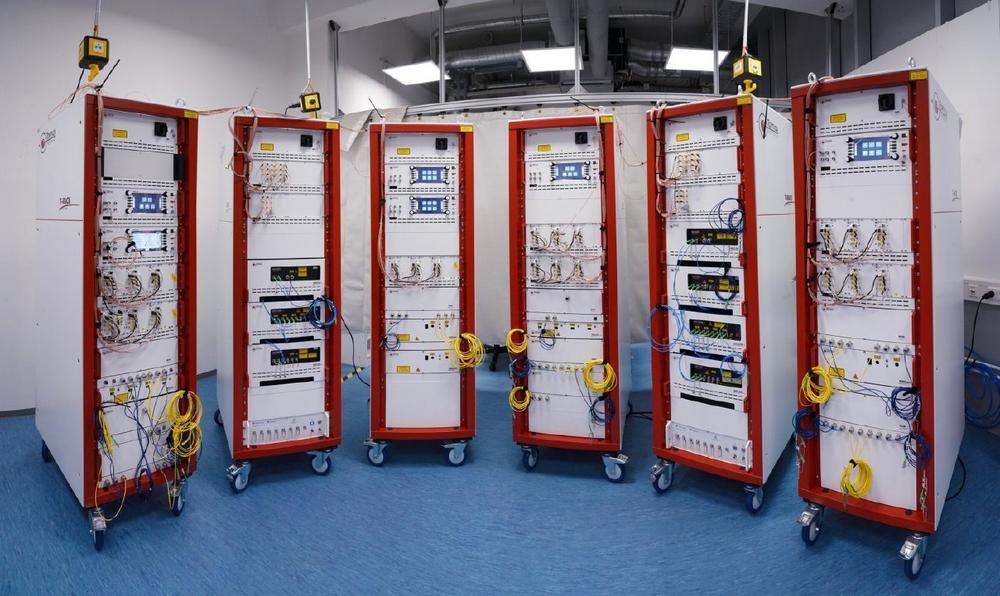The groups of Jürgen Eschner and Christoph Becher at the Saarland University (UdS) are using single trapped ions and single photons to develop and study the basic building blocks for future quantum networks.
Bridging 30 km with Entangled Photons
An essential aspect of these networks is the ability to distribute entanglement between distant network nodes using photonic channels, such as free-space transmission or fiber networks. In this joint experiment, quantum memories based on single trapped Ca+ ions and SnV centers in diamond are controlled and manipulated in two separate laboratories connected by a 15 km fiber optic link, provided by a local telecom company.
Distributed Entanglement by means of synchronized frequency combs
Distributed entanglement will be achieved in several steps: The trapped Ca+ ions and SnV centers are excited to a short-lived upper state, emitting a single photon as they decay. This so-called lambda-type transition allows to entangle the spin state of the atom with the polarization or emission time of the single photon. The generated photons have wavelengths of 854 nm (Ca+), and 619 nm (SnV), respectively. To avoid high loss during the transmission via fiber, the photon frequencies are shifted to commonly used telecom bands at ~1550 nm using polarization-preserving quantum frequency conversion (QFC). The fiber link guides the two photons from each lab to a Bell-state measurement setup in which a successful photonic projection measurement heralds the entanglement of the two dissimilar quantum systems. In order to have the temporally overlapping, both experiments are synchronized to within a few nanoseconds. Notably, the QFC must render the frequencies of the two photons indistinguishable; hence the synchronization and stabilization of all involved lasers is essential. Furthermore, the read-out of the atomic states for verification of entanglement or its application in quantum communication requires a typical optical phase reference at the respective wavelengths provided by two synchronized frequency combs.
TOPTICA’s Comprehensive Laser Solutions for Atom Trapping, Cooling, and Interrogation
TOPTICA has provided most of the lasers for trapping, cooling and interrogating the atoms as well as an optical parametric oscillator (TOPO) for the QFC. Two DFC frequency combs synchronize the experiments, while two transfer lasers at telecom wavelengths and active fiber noise cancellation ensure low-noise photon transmission.
Laser Rack Systems for Quantum Technology 2.0 Applications
TOPTICA’s Laser Rack Systems are designed to not only support quantum communication, but also quantum computing, quantum simulation, quantum sensing and many other exciting quantum-technologies.
Please visit our website for more information: https://www.toptica.com/products/laser-rack-systems
TOPTICA has been developing and manufacturing high-end laser systems for scientific and industrial applications for more than 25 years. Our portfolio includes diode lasers, ultrafast fiber lasers, terahertz systems and optical frequency combs. TOPTICA today has 550 employees in 7 commercial entities with a consolidated group revenue of 130 Mio €.
TOPTICA Photonics AG
Lochhamer Schlag 19
82166 Gräfelfing
Telefon: +49 (89) 85837-0
Telefax: +49 (89) 85837-200
https://www.toptica.com
Senior Marketing Manager
Telefon: +49 (89) 85837-0
Fax: +49 (89) 85837-200
E-Mail: jan.brubacher@toptica.com
![]()
